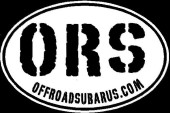Ratbag
Administrator
- Joined
- Jan 1, 2012
- Messages
- 7,424
- Location
- Bayside, Melbourne, Vic
- Car Year
- MY06, MY10
- Car Model
- Forester SG & SH
- Transmission
- 5MT/DR & 4EAT Sports
Gidday NL
A good list ... .
.
As for Allen keys:
https://en.wikipedia.org/wiki/Allen_keys
Particularly:
"The Allen name is a registered trademark, originated by the Allen Manufacturing Company of Hartford, Connecticut circa 1910, and currently owned by Apex Tool Group, LLC. Its genericized use is discouraged by this company. The standard generic name used in catalogs and published books and journals is "hex key"."
It's called a key, because that's what it is. The indentation in the bolt head is a keyway, so a key is used to manipulate it ... :iconwink:
 .
.
Seeing as how we are not the target of the copyright owners, many of us call them "Allen keys", not "hex keys". It's what I was brought up calling them.
allens keys (btw, who the hell is Allen & why are they called "keys"!),
Cant think of anything else but if I do I'll update this list...
A good list ...
As for Allen keys:
https://en.wikipedia.org/wiki/Allen_keys
Particularly:
"The Allen name is a registered trademark, originated by the Allen Manufacturing Company of Hartford, Connecticut circa 1910, and currently owned by Apex Tool Group, LLC. Its genericized use is discouraged by this company. The standard generic name used in catalogs and published books and journals is "hex key"."
It's called a key, because that's what it is. The indentation in the bolt head is a keyway, so a key is used to manipulate it ... :iconwink:

Seeing as how we are not the target of the copyright owners, many of us call them "Allen keys", not "hex keys". It's what I was brought up calling them.



